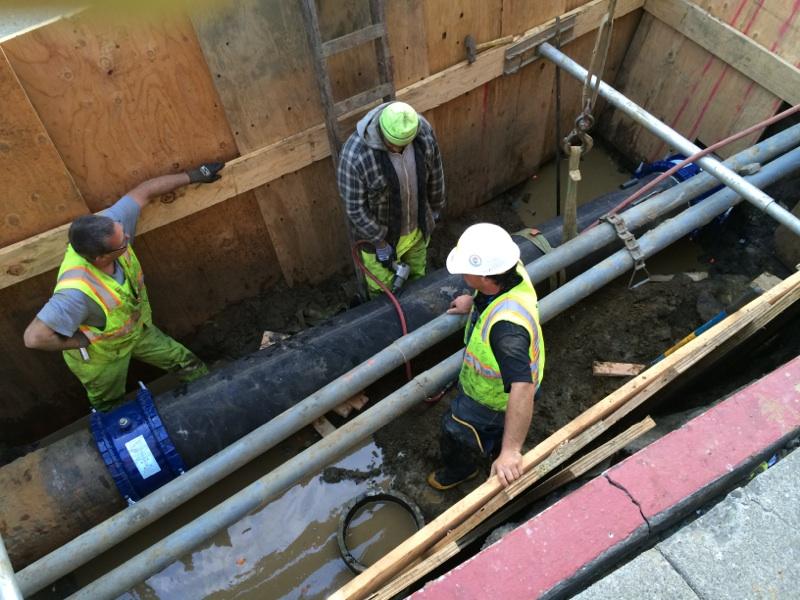 Trench fatalities and incidents typically occur due to non-compliance with safety protocols. It is not just companies that are negligent, complacency may creep in to any crew’s day to day behavior.
Trench fatalities and incidents typically occur due to non-compliance with safety protocols. It is not just companies that are negligent, complacency may creep in to any crew’s day to day behavior.
We talked to Doug Riseden, Hymax USA’s Field Support Technical Manager, about keeping trenching crews alive and uninjured.
How common are trenching accidents Doug?
Doug: “More than 1000 workers are injured each year. OSHA reports 54 trench deaths per year occur on average. That means 4 or 5 lives lost each month.”
“Time and again people forget how dangerous the working conditions are. Experiencing a cave in where there are injuries or death is something that will live with you for the rest of your life. Imagine living with the question ‘could I have done something better?’ I always say that PTSD stands for “post trench stress disorder“. What people don’t understand is that living with the consequences of a trench accident can be a massive mental challenge. Also, remember a fatality doesn’t make the job go away, someone still has to go back into the trench and fix the problem.”
What is the main cause of these accidents?
Doug: “Laziness, most accidents happen when people take short-cuts and ignore regulations and standard operating procedures. Take trench boxes; people use cost as an excuse to avoid using boxes. I have often seen a box sitting there right beside the trench, because no one could be bothered to put it in the ground.”
Why do you think teams become complacent?
Doug: “Time and again people forget how dangerous the working conditions are. Consider a simple task, like cutting a pipe with a saw. Do the same job in a ditch and it just became a whole lot more dangerous. Then you have the perception issue. Guys who might test the air if they are going down into the sewer think that it is fine to jump into a ditch without a test. There is also the issue of repeated ‘success’, when crews have always got away without following recommended procedures, for example testing the air in their ditch, not a great excuse on the day you needed to have tested.”
Why is the injury rate and fatality rate so high?
Doug: “One of the big problems is how fast conditions can change. Once a pipe bursts, water can flood a ditch in seconds. Once soil becomes mobile, it moves fast. Tragedy happens in an instant”
What one thing would you give a crew to keep them safer?
Doug: “Trained, competent persons. Each crew needs a competent person, someone who has the experience and training to evaluate trench sites and make the call to stop the job. In my opinion every person who gets in the ditch should have the power to make that call. You need more than one competent person for each crew to deal with sick days and vacations.
Remember OSHA standards state that the ditch must be inspected daily. Imagine what overnight rain can do to a trench, sometimes it is like starting from scratch just to get the dirt out of the ditch. A ditch that was safe yesterday has an unknown status today. It must be inspected before anyone goes in.”
Are there any other improvements you would like to see?
Doug: “Communications. Crews should have excellent lines of communication with their fire or rescue departments. Your competent people are the same people who can discuss the hazards involved in trench work and how your crew would need the rescue teams to respond. Don’t leave it to the day you need rescue to have these conversations. In my opinion you should be communicating with the emergency dispatch center before you enter a trench or a confined space, every time. Make sure they know your location. Do they know how to assist you? These things matter.”
Do you have rule of thumb safety list for us Doug?
Doug: “Follow OSHA guidelines because they save lives. I also have a favourite top ten of my own:
- Always use a trench box or shoring
- Always follow Standard Operating Procedures (SOP’s)
- Make sure workers can get in and out of the trench quickly and easily by properly locating ladders
- Air test any ditch deeper than 4 feet
- Constantly train your crew as “competent people”
- Know your emergency contact list
- Know your weather forecast
- Treat all soils as if they are class C
- Remember traffic safety is part of trench safety
- Have the right product on hand and ready

